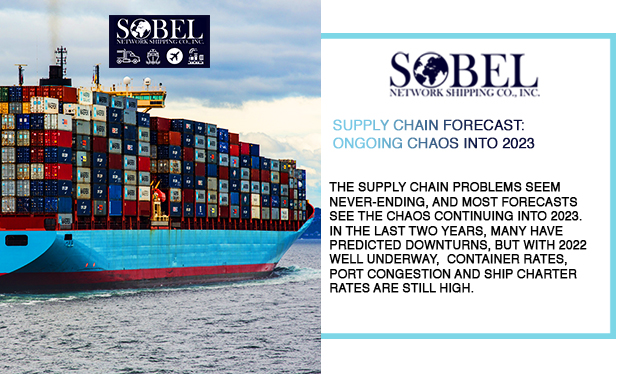The supply chain problems seem never-ending, and most forecasts see the chaos continuing into 2023. In the last two years, many have predicted downturns, but with 2022 well underway, container rates, port congestion and ship charter rates are still high.
The shipping boom has increased the sale and purchase market for container vessels which have hit an all-time high. Container vessels are changing hands rapidly as shipowners pay virtually any price to successfully secure tonnage.
A recent report by Alphaline showed that there were 572 container ships sold which is comparable to 1.94 million TEUs (twenty-foot equivalent units). This is a 26% increase, surpassing the annual record from 2017, which was a year when sales skyrocketed due to the collapse of the ocean carrier Hanjin.
In the charter market, the rates continue to increase to all-time highs. Many vessels are being extended or fixed a year prior to delivery.
Confidence in 2023 remains high.
MCS extended its charter which is 6,493-TEU MSC Bosporus for five years at a cost of $50,000 per day. The extension will begin in December. They also extended contracts for 8,500 to 9.500 TEU ships owned by Danaos with reported start dates as late as April 2023.
Mathew Cox, CEO of Matson has spoken up and said that he projected elevated congestion and consumption will remain in place through October and there will be an increased demand in China service throughout the year.
DNB Analyst Jorden Lian stated during an analyst panel presented by Capital Link,
“Things are looking stellar, and they continue to be looking strong for longer than we thought.”
He went on to say, “substantial fleet growth coming to market in 2023 and 2024,” but added: “We’ve been playing around with an idea for a bull case: If you don’t see the congestion issues easing before you get these [newbuild ship] deliveries in 2023 and 2024, you have 15% more capacity waiting in a queue in those same ports, and then all the sudden it becomes a port issue, not a shipping issue. It’s not all about the shipping balance. It’s about what goes on with the land-based side of logistics.”
The Biden administration and the ports are struggling to alleviate the supply chain congestion. However, many do not see any progress occurring until the U.S. demand for imports falls.
Phil Levy, Flexport Chief Economist stated in an interview with American Shipper,
“There are a couple different theories. One is that we have this sustained, elevated demand that’s driving this. That’s my view. Another is what I call the ‘who forgot to flip the switch?’ theory — that there’s something wrong with supply chains and somebody was asleep and if we just flipped the switch, it’ll all be better. That we just have to solve these temporary supply chain issues.”
If the supply chain pressures and port congestion continue then the transport costs will continue to climb with things becoming worse.


